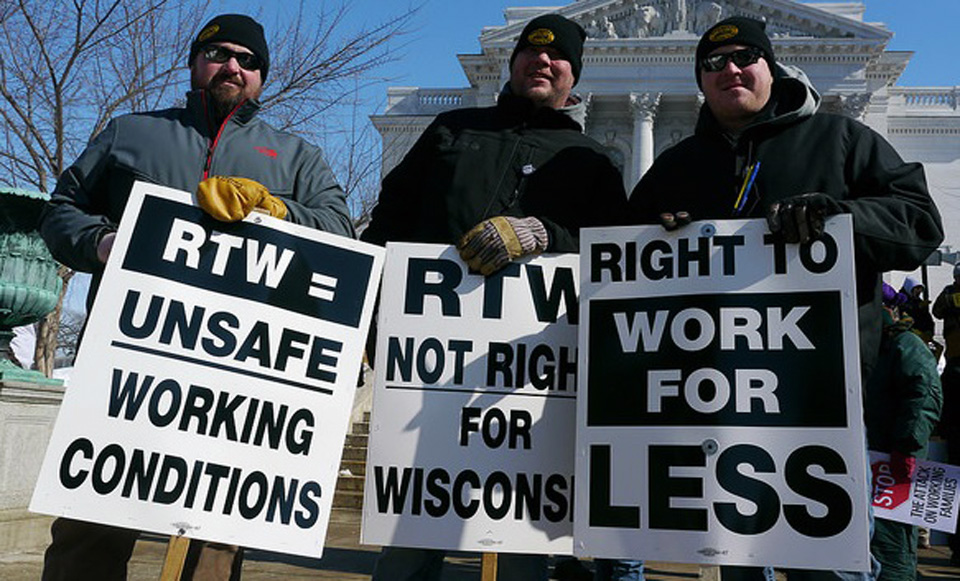
MONTGOMERY, Ala. —Unionists campaigned hard this year to try to prevent Alabama voters from enshrining the so-called right to work law in the Alabama constitution. They failed.
“The constitution ‘is the most amended in the world. Enough already!!’” state labor federation President Bren Riley wrote on the fed’s website in early October as part of the fed’s drive. Few listened. The amendment passed by a 70 percent-30 percent ratio.
Riley explained the Alabama RTW constitutional amendment “does absolutely nothing that has not already been the law in Alabama since 1953!” That harkens back to the first RTW law, in Arkansas in 1944, enacted as a way to prevent African-Americans from unionizing.
The Alabama RTW constitutional amendment scheme was one of two such plans, both enacted by Republican-dominated state legislatures and endorsed by the GOP governor, on the ballot on Nov. 8. The other, in Virginia, failed. But both states have RTW laws – which workers and their allies call “right to work for less” – on the books.
The two, like other Southern states, also have low union density: 10.2 percent in Alabama and 5.4 percent in Virginia.
“If a man or a woman wants the benefits of National Rifle Association membership, they pay dues. If a business seeks membership in the Chamber of Commerce, it pays dues. Folks don’t get country club memberships without paying dues, either,” Riley continued.
“So it simply makes sense on every level that those workers reaping the benefit of the tireless efforts of Alabama’s unions pay a fair share of dues, as well. Dues for benefits—if the NRA thinks that concept is fair, so do we.”
Workers’ foes, and specifically a right-wing think tank in Michigan that tracked referenda results, cheered the RTW Alabama win, along with defeat of RTW repeal in South Dakota. Voters there upheld RTW by a 4-to-1 ratio.
But in Washington state, workers’ foes had to admit defeat, when an initiative pushed by the Service Employees to keep right wingers from trying to coerce home health care workers to leave the union won – for SEIU – by a 72 percent-28 percent margin.










